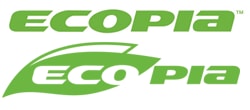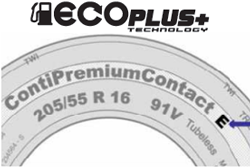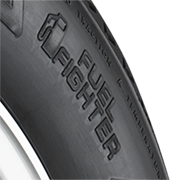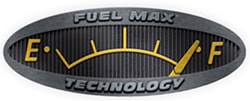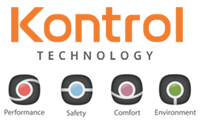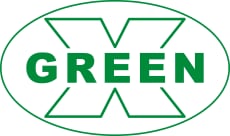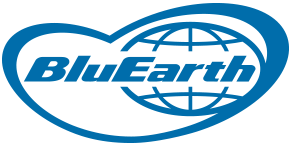Sustainability and the reduction of humans' impact on the environment continue to remain at the forefront of corporate social responsibility. Tire manufacturers are no exception, and when dealing with the production of millions of tires annually, small changes on a per-unit basis can have a significant overall impact. To this end, many tire manufacturers have adopted environmentally-conscious tire designs and production processes in an effort to help conserve our natural resources. From zero-landfill manufacturing plants to the use of alternatively sourced rubber and non-aromatic oils in tires, from low rolling resistance compounds that improve vehicles' fuel efficiency to longer-lasting tires that reduce the number of waste tires removed from service, even through reforestation and environmental cleanup, tire manufacturers are meeting this challenge head on and with conviction.
Though the goal of sustainability is the same, each manufacturer follows their own path in its pursuit. Similarly, manufacturers use differing terminology to describe their initiatives and different methods of identifying tires with a focus on conservation.
You can identify tires that utilize environmentally conscious materials and/or manufacturing methods by using the "Eco Focus" filter in our search results, or by looking for the "Eco Focus" footnote on individual tires in search results or in Specs on the product detail page.
Bridgestone ENLITEN - Bridgestone's ENLITEN technology delivers a lightweight tire requiring less material and lower rolling resistance in order to reduce emissions. The ENLITEN name begins and ends with the same letters: "en" in Japanese meaning "circular forms", the technology's ethos referring both to the goal of balance without waste and the company's holistic approach to delivering a tire that can deliver on sustainability and durability without trading off driving performance.
ENLITEN promises low rolling resistance, extending EV range and offering greater fuel economy for ICE vehicles, and by extension, lowered CO2 emissions and energy waste. By optimizing weight and reducing the resources needed to travel the same distance as a conventional tire, ENLITEN focuses on greater resource management, introducing more recycled/renewable components per tire, making the most of Earth's finite materials without sacrificing driving pleasure.
Bridgestone Ecopia - One step closer to "The Ecological Utopia," ECOPIA tires help drivers reduce their carbon footprint by offering extremely low rolling resistance for excellent fuel economy and lower vehicle CO2 emissions.
In addition to their focus on low rolling resistance, Ecopia-branded tires are manufactured to deliver long life, reducing the frequency that tires need to be replaced, and therefore decreasing the quantity of scrap tires created.
Beyond reducing the environmental impact of their end products, Bridgestone seeks to achieve their environmental mission, "to help ensure a healthy environment for current and future generations" by focusing on three objectives: to be in harmony with nature, value natural resources and reduce CO2 emissions. Being in harmony with nature includes contributing to biodiversity through habitat enhancement and through environmental education and research. In valuing natural resources, the company seeks to promote conservation through operational improvements and product design, reducing CO2 emissions which is a continual process and pursuing a constant reduction in the emissions of greenhouse gases from their operations and their products' complete life cycle.
A key component to Bridgestone's strive toward a healthy environment is the effort to expand and diversify renewable resources, primarily in finding a new source of natural rubber. To this end, the company has made significant investment in the cultivation of guayule, a desert shrub comprised of tissues containing a rubber constituent and, in 2015, Bridgestone produced the first tire with 100% of guayule's natural rubber-containing components. Critically, guayule can be grown in climates completely different than the Hevea rubber tree, which is the traditional source for natural rubber. This diversification will relieve some of the strain placed on the small region of the world with an environment suitable for growing and harvesting the rubber tree.
Additional initiatives focused on ensuring a healthy environment include moving toward zero landfill manufacturing plants and the Tires4ward initiative, through which the company envisions a waste-free tire industry. To that end, Bridgestone has the goal that for every tire the company sells, one waste tire will go on to another valuable purpose, accomplished through the recycling of tires removed by their company stores and through clean-up events spent removing waste tires from public lands, rivers, streams and lakes across the country.
Continental EcoPlus+ Technology - Continental tires branded with EcoPlus+ Technology or the "E" symbol utilize manufacturing techniques focused on reducing rolling resistance for improved fuel efficiency, improving tread life and enhancing grip on slippery roads for reduced stopping distances in wet conditions.
Further initiatives are being pursued to reduce the environmental impact of the raw materials used in tire manufacturing. Continental has made great strides toward utilizing natural rubber produced from the roots of a Russian dandelion, which can be cultivated on previously unused lands in Europe. This system provides an easily renewable source of natural rubber that does not compete for farmland which could be used for food production and requires the raw material to travel significantly less distance before reaching the manufacturing facility. In 2016, Continental produced the first tire with 100% of the tread rubber compound comprised of dandelion rubber.
Additionally, Continental is moving toward achieving "zero landfill" status in its production plants, meaning 100% of the plant's waste is converted into recycled products or used for energy. The company's Mt. Vernon, Illinois and Sumter, South Carolina manufacturing facilities are both "zero landfill," averaging nearly 30 million pounds of waste material either recycled or turned into energy each year. Further initiatives at the manufacturing level consist of sustainability through conservation of water and energy, educating employees and monitoring any issues that could waste energy or harm the environment.
Falken Advanced 4D Nano Design - Falken, through their parent company Sumitomo, utilizes Advanced 4D Nano Design to simultaneously improve the "3 Key Tire Performance Traits" of wet grip, wear resistance, and fuel efficiency. These improvements are made possible by the ability to accurately simulate and analyze rubber and its behavior at the molecular level, allowing the company to develop new materials that further advance possible achievements in these three conflicting performance goals.
Firestone Fuel Fighter Technology - Designed using proprietary polymer technology and construction methods to help reduce vehicles' fuel consumption and the emission of C02 and other greenhouse gases, Firestone's Fuel Fighter Technology attempts to optimize every component in a tire's construction to reduce weight and improve fuel economy. From the application process used for the nylon casing, to the construction of the steel cord belts, to the tread and sidewall rubber compounds, tires featuring Fuel Fighter Technology utilize an integrated approach toward reducing the ecological footprint of tires and the vehicles on which they are installed.
Goodyear Fuel Max Technology - Utilizing state-of-the-art science to develop compounds and constructions that help reduce energy loss as a tire rolls, Fuel Max Technology improves fuel efficiency while retaining or even enhancing tread life and traction. A proprietary fuel-saving tread compound has been developed at the molecular level and features a blend of polymers which help improve silica dispersion and enhance the overall physical properties of the tread. This allows for reduced rolling resistance in addition to capable wet performance.
Hankook Kontrol Technology - Hankook's Kontrol Technology is a philosophy applied during the research and development and manufacturing processes for all of the company's products. The four pillars of the philosophy are performance, safety, comfort and environment, with the environmental aspect focused on increasing fuel efficiency and reducing negative impact on the environment through lower carbon emissions.
Kontrol Technology also encompasses a series of proprietary innovations developed in the pursuit of performance, safety, comfort and environment. Dynamic Profile for Fuel-Efficient Tire (Dyna-Pro FET) Technology is optimized to reduce the tire's rolling resistance without negatively affecting any other aspects of a tire's performance, while Fuel Saving Compound Technology (FSCT) is a special silica compound that effectively balances the new material mixture and silica to lower rolling resistance without compromise in other attributes.
From a manufacturing standpoint, Hankook is reducing the amount of oil byproducts used in their tires, including synthetic rubber, carbon black and synthetic oil, and replacing them with eco-friendly materials. Additionally, the company is lessening the environmental impact of their production facilities by purifying waste water, reducing odors and minimizing the greenhouse gas emissions that result from manufacturing.
Michelin Total Performance and Green X Technology - In the pursuit of Total Performance, Michelin strives to continually improve all attributes of a tire, with no major sacrifices along the way. This is true of their tires' capabilities on the road in addition to their environmental impact, with Michelin seeking better mobility through the sustainability of the planet and society over the long term. Michelin's commitment to protecting the environment extends to all stages in the life of the tire, from design and material choice, to manufacturing, the tire's use and its potential for recycling. Specific areas of sustainability focus include: protecting the environment, saving raw materials and energy, reducing emissions into the air and water, reducing vehicle fuel consumption, increasing tire life, reducing waste and devising new solutions for recycling.
Michelin has long been an innovator in the area of maximizing the output delivered by their tires, with a focus on efficiency through making the best possible usage of every gram of material used. In 1910, the addition of carbon black to rubber compounds extended tire longevity by a factor of five, and in 1946, Michelin introduced the radial tire, which multiplied tire longevity threefold. Today, the company seeks to maximize the usable life of their tires through long lasting performance, in addition to the physical number of miles they are capable of covering. Delivering tires that prolong safety performance to the end of their tread life, thus avoiding the need to replace the tires before they are completely worn out, allows Michelin to limit excessive use of raw materials and energy in manufacturing.
In addition to longer life, the radial tire reduced rolling resistance by 30% over contemporary tires, essentially qualifying it as the first "green" tire. In 1992, Michelin reduced rolling resistance by another 20% by replacing the carbon black in the rubber compound with Silica. Today, the Green X logo is Michelin's guarantee that a tire provides a level of energy efficiency among the highest in the market for its category without compromising other key characteristics, such as traction and tread wear. A tire's qualification for the Green X logo is determined through laboratory testing on a size-by-size basis, and the branding is intended to provide visual confirmation of the tire's positive contribution to vehicle fuel efficiency and the global environment.
Through innovation and conservation, Michelin has focused on sustainability in the tires they produce as well as the manufacturing plants that produce them. Their facilities' energy usage is monitored and optimized to reduce consumption, with many utilizing solar, wind or other alternative power sources. These initiatives resulted in a 37% reduction in the emissions produced by Michelin's facilities between 2005 and 2015, with the goal of a 50% reduction by 2050.
Further efforts to preserve natural resources include the TREC Alcohol project and the TREC Regeneration project. Both projects use end-of-life tires to create materials used in the production of new tires. The TREC alcohol project creates alcohol, which is then used to produce butadiene, the basic ingredient in synthetic rubber, and the TREC Regeneration project makes high-grade regenerated rubber compounds which are then used in the manufacture of new tires. The company's reforestation program seeks to ensure the sustainability of rubber tree cultivation, and over 2,700 acres of their rubber tree plantation in Bahia, Brazil have been left completely uncultivated to protect the plant and animal life that live in the region.
Nexen N'Blue - Nexen's N'Blue line of tires focus on saving energy, reducing CO2 emissions and delivering longer tread life through the use of key technologies. The company's Rolling Friction Simulation technology allows the optimization of the tread pattern and profile to reduce rolling resistance by up to 30%, translating to as much as a 5.7% improvement in fuel efficiency. Combined with the Super Low Rolling Resistance Compound and cavity profile, CO2 emissions are reduced by 5.4% compared to conventional tires.
Tire life is improved by up to 30% through Footprint Optimum- shape Simulation, which allows Nexen to virtually design the tread profile and construction through computer modeling to learn how the footprint shape changes under load and how the tire will wear while in service. Advanced compounding technology produces high-mileage tread rubber, while the computer-designed tread blocks minimize irregular wear that would cause a tire to be prematurely removed from service.
Pirelli EcoImpact - Pirelli continually strives toward environmental sustainability by manufacturing products and utilizing production systems with reduced environmental impact and low energy consumption. Environmental friendliness, safety and performance are essential features designed into many Pirelli tires, and the company has created EcoImpact icons to signify each tire's compatibility with specific environmentally friendly goals:
Energy Efficient
Low rolling resistance rubber compounds and internal constructions reduce vehicle fuel consumption, resulting in lower CO2 emissions.
Clean Air
Tread compounds containing no high aromatic oils reduce petroleum dependency and avoid the dispersion of substances potentially hazardous for the environment when tires are manufactured.
High Mileage
Long-lasting tires means fewer tires are produced, reducing raw material, water and energy consumption, in addition to fewer scrap tires that require disposal.
Low Noise
Optimization of the tread design decreases the noise generated by the tire rolling and reduces noise pollution.
Additional efforts are made through efficiencies in production processes in the company's manufacturing plants, with a focus on lowering water and energy consumption, reducing C02 and NOx emissions, waste recovery and even audits of the sustainability of Pirelli's suppliers.
Sumitomo Advanced 4D Nano Design - Sumitomo utilizes Advanced 4D Nano Design to simultaneously improve the "3 Key Tire Performance Traits" of wet grip, wear resistance, and fuel efficiency. These improvements are made possible by the ability to accurately simulate and analyze rubber and its behavior at the molecular level, allowing the company to develop new materials that further advance possible achievements in these three conflicting performance goals.
Yokohama BluEarth - BluEarth is Yokohama's product engineering philosophy for environmentally-, human- and socially-friendly tires, developed with the belief that tires should deliver driving pleasure as well as less environmental impact.
BluEarth comprises multiple advanced technologies focused on improving the sustainability of our natural resources through improved fuel efficiency and reduced usage of non-renewable materials. These five core technologies consist of nano BLEND Compound, Light Weight Technology, Advanced Inner Liner, Fuel Saving Construction and AERO Dynamics Technology.
Nano BLEND Compound is Yokohama's core technology and is composed of three main ingredients: BLEND polymer, orange oil and FINE silica. The low rolling resistance BLEND polymer combines with the highly dispersible FINE silica to deliver fuel savings, long mileage and wet grip, with further improvements realized by the addition of orange oil, which allows the tire to better conform to the road, improving adhesion in wet and dry. As an added benefit, replacing some highly aromatic oils with orange oil reduces dependency on petroleum and replaces a non-renewable resource with one that is easily renewable.
Through the use of Light Weight Technology, Yokohama BluEarth tires can weigh up to 17% less than conventional tires, requiring less fuel to move. A properly inflated tire has lower rolling resistance than one that is underinflated, so the Advanced Inner Liner design uses a traditional flexible rubber inner liner plus an added plastic layer, reducing air loss resulting from permeation by up to 36% and further improving fuel economy. Uneven heat buildup can increase rolling resistance and rapid wear, so Fuel Saving Construction features anti-heat compounds and computer-simulated construction focused on controlling heat buildup and improving tire longevity. Finally, AERO Dynamics Design uses computer modeling and wind tunnel testing to develop sidewall features that lower wind resistance and aerodynamic drag during high-speed operation, such as recessed branding and a dimple design similar to that of a golf ball.
Yokohama's additional eco-conscious activities include their "Forever Forest" reforestation initiative, plus past involvement through sponsorship in the Pikes Peak International Hill Climb EV Challenge and FIA Alternative Energies Cup.

